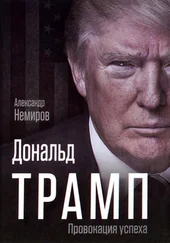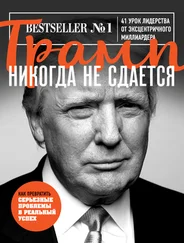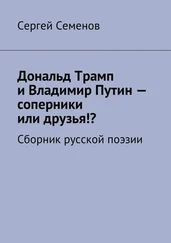This is how universities communicate passive aggression. This is how they become complicit in the stifling of free speech.
And the fact that it happened at Berkeley, the supposed bastion of free speech, is insanely ironic.
Back in the early 1960s, when students were marching for civil rights and trying to organize against the Vietnam War, the campus of UC Berkeley became the source of the Free Speech Movement. In those days, it was the university, not the students, that was trying to shut down certain speakers and stifle the free expression of ideas. In fact, the students had to hold peaceful protests to defend their right to express ideas that might be offensive or “triggering” or dangerous. They were willing to sit for hours, be arrested, and be ridiculed just to stand up for their right to free speech, no matter how disgusting or inflammatory that speech was.
Before the Berkeley Free Speech Movement, discussing politics on campus was all but forbidden. You couldn’t have a rally or hold an event unless it was sanctioned by the university, and the university wouldn’t sanction anything it thought was too inflammatory (read: interesting). After the Free Speech Movement, colleges became what they had always been supposed to be: places where your ideas are challenged, your mind is tested, and everyone is free to express his or her beliefs without fear of retribution from crazy people.
Sadly, that’s usually not what happens anymore. Today, free speech is no longer free. Berkeley spent $600,000 for security for Shapiro.
At the start of the campaign, I didn’t plan on visiting a whole lot of college campuses. I assumed that stump speeches happened mostly in parking lots and diners, all the places where middle-aged working-class voters hung out and talked. But after the first few events I did in support of my father, we started to notice that the people coming to see me were pretty young. Some were still in high school and college. I don’t know whether it was my use of social media or my boyish charm and good looks, but within a few weeks, I had become one of the most requested speakers by campus groups all over the country. When I really started traveling for the campaign, giving several speeches a day, I decided to add a few campuses to my agenda, just to see what all the fuss was about.
I had barely been back on a college campus since I had graduated from the University of Pennsylvania in 2000. I had seen a campus only on the rare occasions when I had gone back to Wharton, where I would occasionally be invited to give speeches on business and my career in real estate. But then again, I had been talking mostly to the sane, well-adjusted portion of the student body. I’d had absolutely no idea what was lurking in the halls of the other buildings: the gender studies offices, the counseling centers, the microaggression prevention rooms.
Needless to say, I knew little of the way things worked on campus anymore, but I knew from friends and the news that they had changed a whole lot. According to stories, the kids were protesting anything they didn’t agree with, refusing to read books that contained violence—which, in my opinion, excluded some great classics—and disinviting speakers they deemed “dangerous.” I had no idea what I was in for, so I decided to enlist some help with my “youth outreach” operation.
A few months earlier, I had met a young guy named Charlie Kirk. We’d been introduced by an old college friend of mine. From what I could gather in those first brief conversations, Charlie was a bright young guy who was focused on all the right things. He’d founded his own political organization when he was only eighteen years old—Turning Point USA—which fought liberal bias and the discrimination against conservatives that was happening in colleges all over the country. Long before anyone saw that those things were a problem, Charlie did. And he was trying to do something about them.
Anything I encountered on a campus, Charlie had already seen it and knew exactly how to handle it. Over the years, Charlie had had everything from Coca-Cola to chairs thrown at him. More than once, as I’d be giving a speech and protestors would try to shout me down, Charlie would get his Turning Point USA supporters to shout “USA! USA! USA!” until they filled the auditorium and Antifa or the social justice warriors (SJWs) would lose their willpower. He also made sure that everyone on campus knew where the speeches would be held and ensured that all the events began on time and without a hitch. But Charlie was also instrumental in helping me understand the crisis that was building in our nation’s colleges. Without him and the experience of seeing things play out and hearing stories from real students, I don’t think I would be as alarmed as I am.
I don’t think I was ever called a “Nazi” to my face, but I certainly heard the word more than once. These days, as Charlie and the rest of the Turning Point USA crowd explained, anyone the left doesn’t agree with is a “Nazi.” But I also heard other things that were just as troubling.
At one university, the protestors suggested that my words would “do violence” to marginalized communities on campus, such as people of color or members of the LGBTQ community. Apparently, those kids did not mean that word metaphorically. They really meant, with no hint of irony, that having to hear opinions they didn’t agree with would actually be a violent act against them, the same way a punch in the face—or a blow from a bike lock—would be. And by the way, I would never say anything derogatory about people in the LGBTQ community or people of color, let alone try to do them harm.
But in today’s climate, words have completely lost their meanings. When conservatives speak, it’s called “violence.” When liberals react to that speech by beating people up and throwing rocks through windows, it’s called “self-defense.” When a conservative says “America is a good country” or “God bless America,” that’s called hate speech. When a liberal says “all white people should be extinct,” as Sarah Jeong from the New York Times said, that’s called ironic protest. Suddenly, liberals classify whether something is a violent act based on how it makes them feel, not whether the person who committed the act—or, in most cases, spoke the words—actually intended them to be violent or controversial. Intent doesn’t matter; feelings do.
To even begin to understand how we got here, it’s important to zoom out and look at all the factors involved.
Although it goes back many years, the problem seems to have ramped up around 2010 or so, when a generation of kids who’d been raised with phones in their hands and participation trophies on their shelves first entered college. Their whole lives, those kids had been taught by their helicopter parents that feelings are the only things that matter and that they shouldn’t have to be exposed to anything they don’t like. Instead of playing outside and scraping their knees, those kids stayed on social media and got a 24/7 mainline of garbage and outrage beamed right into their brains.
It’s no wonder they came out soft and unable to function.
Writing about the phenomenon in The Atlantic , Greg Lukianoff and Jonathan Haidt warned against the dangers of helicopter parents and social media. As they put it, “it’s not hard to imagine why students arriving on campus today might be more desirous of protection and more hostile toward ideological opponents than in generations past.… Social media makes it extraordinarily easy to join crusades, express solidarity and outrage, and shun traitors.” They also pointed out, correctly I think, that “social media has fundamentally shifted the balance of power in relationships between students and faculty; the latter increasingly fear what students might do to their reputations and careers by stirring up online mobs against them.”
Читать дальше












